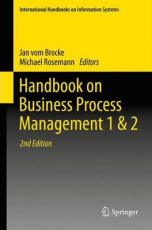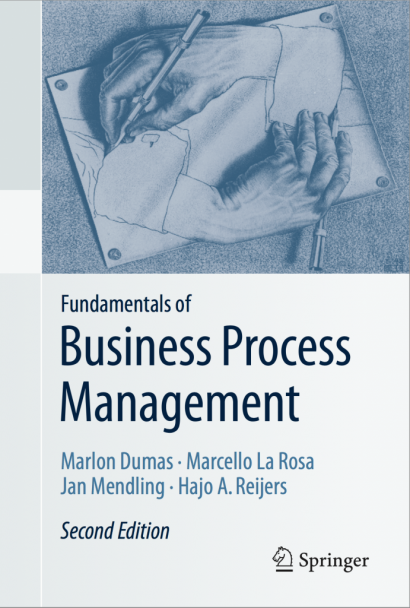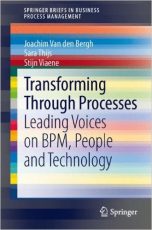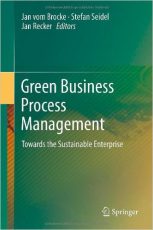Submit your case
We are currently inviting cases for the 2nd volume of the BPM Cases Book. The great success of the first edition – with downloads from all over the world, we are now putting together a second volume opening up for further companies to report their BPM cases as well as to include BPM cases using innovative contemporary technology such as process analytics, robotics, blockchain, virtual reality, and machine learning.
Submissions are open until 20.12.2019. See timeline below.
Case Structure
All cases follow a unified structure that makes the relevant case knowledge easily accessible and transferrable to other contexts. Following the structure the chapters are short and sharp. The structure helps readers in finding the most interesting parts of the cases.
- Introduction – What is the story of the case? A brief narrative of the entire case informs readers by summarizing its key aspects.
- Situation faced – What was the initial problem that led to the action taken? The context of the case is specified concerning needs, constraints, incidents, and objectives.
- Action taken – What was done? What measures were undertaken, such as in regard to process redesign or process innovation? What methods and approaches were used?
- Results achieved – What effects resulted from the actions taken? Results could take the form of changes in performance measures and/or qualitative statements from employees, customers, and other business partners. To what degree were expectations met or not met?
- Lessons learned – What did the organization learn from the case? What can others learn? Lessons learned are grounded in the case and serve as example for others.
Frameworks
This book uses well-established BPM frameworks to characterize the cases it presents based on a shared language.
BPM Six Core Elements (Rosemann, vom Brocke, 2015):
The model helps to describe what actions an organization took to conduct BPM. It conceptualizes six BPM capability areas, namely: Strategic Alignment, Governance, Methods, Information Technology, People, and Culture. The key characteristic of the model is to enlarge the understanding of BPM from a mere technical concept towards a holistic management discipline. Click here for more material on the framework.
BPM Lifecycle-Modell (Dumas et al., 2013):
The model helps to structure the different tasks that are associated with BPM. It describes six major steps: process identification, process discovery, process analysis, process redesign, process implementation and process monitoring and controlling. The key characteristic of the model is to illlustrate how a BPM project or a BPM initiative can be organized towards arriving at an improved process. Click here for more material on the model.
BPM Context Framework (vom Brocke, Zelt, Schmiedel 2015):
The model helps to characterize a BPM initiative according to specific context factors, such as goal, process characteristics, organizational characteristics, and environmental characteristics. The key characteristic of the framework is to capture the situational nature of BPM. BPM needs to be aligned to the specific context of an organization and the BPM context framework helps to assess this context. Click here for more material on the framework.
Timeline
Submission of cases
10.02.2023Reviews back to authors
10.03.2023Revision back to editors
10.04.2023Final review
10.05.2023Final submission
10.06.2023Manuscript to publisher
31.07.2023SUBMISSION
If you are interested to submit, please send an expression of interest to the editors via submission@bpm-cases.com. We are happy to have a little chat about your case and help making it easy and effective to write up your case.
For writing, please use the following templates: BPM Case, CV
For final submission of your case please use Easychair
Editors

Prof. Dr. Michael Rosemann

Prof. Dr. Jan Mendling

Prof. Dr. Jan vom Brocke
Jan vom Brocke is the Hilti Endowed Chair of Business Process Management and Director of the Institute of Information Systems. Jan has conducted over 300 studies, published in renowned outlets including MIT Sloan Management Review, Management Science, MIS Quarterly (MISQ), Journal of Management Information Systems (JMIS), Journal of Information Technology (JIT), European Journal of Information Systems (EJIS), and Information Systems Journal (ISJ). He has authored and edited over 30 books, including the International Handbook on Business Process Management, BPM – Driving Innovation in a Digital World, Green BPM: Toward the Sustainable Enterprise, and BPM Cases. Digital Transformation – Strategy, Processes and Execution. Jan is a globally recognized thought leader, recipient of over 20 international awards and he has been named Fellow of the Association for Information Systems. He is an invited speaker and trusted advisor on BPM serving many organizations around the world. See Jan`s website for more information.
Jan Mendling is a Full Professor with the Institute for Information Business at Wirtschaftsuniversität Wien (WU Vienna), Austria. His research areas include Business Process Management, Conceptual Modelling and Enterprise Systems. He has published more than 300 research papers and articles, among others in ACM Transactions on Software Engineering and Methodology, IEEE Transactions on Software Engineering, Information Systems, Data & Knowledge Engineering, and Decision Support Systems. He has authored and edited over 15 books, including the textbooks Fundamentals of Business Process Management and Wirtschaftsinformatik (in German). Jan is an invited speaker and trusted advisor on BPM serving many organizations around the world. See Jan`s website for more information.
Michael Rosemann is the Executive Director, Corporate Engagement, and Professor in Information Systems at the Queensland University of Technology and the Honorary Consul for the Federal Republic of Germany in South Queensland. Michael has published more than 250 refereed papers, including publications in renowned outlets, includ- ing MIS Quarterly (MISQ), European Journal of Informa- tion Systems (EJIS) and Information Systems. His books are available in five languages and he has conducted invited keynotes at international, academic and professional BPM conferences. Michael provides regular advice to executives on revenue resilience, innovation systems and process design. See Michael`s website for more information.
Editorial board
We are grateful for the support of colleagues and friends supporting this project on the editorial board of BPM Cases.
- Rene Abraham, University of Liechtenstein
- Saimir Bala, WU Vienna
- Jörg Becker, University of Münster
- Cristina Cabanillas, WU Vienna
- Benoit Depaire, Hasselt University
- Claudio Di Ciccio, WU Vienna
- Maria Fay, SAP AG
- Kathrin Figl, University of Innsbruck
- Thomas Grisold, University of Liechtenstein
- Joshua Peter Handali, University of Liechtenstein
- Henrik Leopold, Kühne Logistics University and HPI Potsdam
- Mikael Lind, Viktoria Swedish ICT and Chalmers University of Technology
- Sonia Lippe-Dada, University of Liechtenstein
- Peter Loos, Saarland University
- Fredrik Milani, University of Tartu
- Markus Otto, University of Liechtenstein
- Hajo Reijers, VU University Amsterdam | Eindhoven University of Technology
- Peter Trkman, University of Ljubljana
- Amy van Looy, Ghent University
- Bandara Wasana, Queensland University of Technology
- Ingo Weber, Technische Universität Berlin
- Isabell Wohlgenannt, Prosperity Company
Please get in touch with us on any related matter.
Related Books

Handbook on Business Process Management

Fundamentals of Business Process Management



